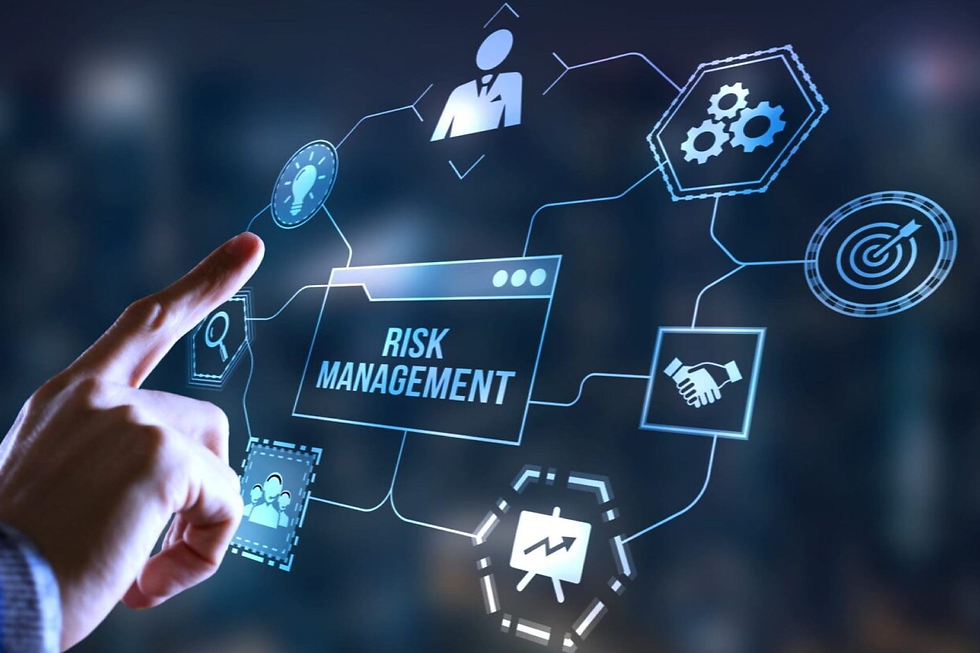Math and Risk Management (Made Easy): Helping Kids Understand Uncertainty
- Nonthapat Hansiri
- Jul 28, 2025
- 3 min read
Updated: Aug 23, 2025
Math and Risk Management (Made Easy): Helping Kids Understand Uncertainty
Life is full of uncertainty. From deciding whether to bring an umbrella to considering whether to start a business, we constantly weigh potential outcomes. At the heart of these choices lies a powerful skill—risk management—and math plays a central role in helping us make better decisions. Even though risk management sounds like a concept for adults in finance or engineering, the foundations can be taught to children in fun and simple ways.
🤔 What Is Risk Management?
Risk management means identifying potential problems before they happen and making smart decisions to reduce the chance of things going wrong. Adults use risk management when investing money, running businesses, or making health decisions. But kids engage in risk thinking, too. For example, a child might decide whether to jump from a swing, trade a snack for a mystery gift, or ride their bike down a steep hill. Each of these decisions involves considering both the rewards and the possible risks. When we teach children to think through these choices, we are helping them build mathematical reasoning under uncertainty.

📐 How Math Helps Us Understand Risk
Many people think of math as dealing with certainty—1 plus 1 always equals 2. But math is just as useful when we’re dealing with uncertainty. Through concepts like probability, data, and expected value, math helps us think more clearly about risks.
Probability tells us how likely something is to happen, such as the 1 in 6 chance of rolling a 4 on a die. Data helps us make predictions; for instance, if it rained three out of the last five days, we might guess there’s a good chance it will rain again. Expected value helps us weigh possible outcomes—if a game gives you $5 half the time but costs $4 to play, is it a good deal? These ideas, while complex-sounding, can be introduced in fun and accessible ways for kids.

🎲 Fun Ways to Introduce Risk at Home
Risk management skills can be developed through playful and engaging activities at home. For example, dice and coin games allow children to make predictions and compare actual outcomes. You might ask, “If I roll this die 12 times, how many times will I get a 6?” Over time, children learn to estimate chances and recognize patterns.
Games like Uno, Blackjack, or Rock-Paper-Scissors can also introduce the idea of probability and strategy. Even everyday choices—like deciding whether to bring a jacket based on the weather forecast—can become opportunities to talk about chance and consequences. For younger children, you can create a “snack swap challenge” where they must choose between a favorite treat or a surprise item. Ask them to explain their choice. Why did they take the risk or play it safe? These kinds of conversations build intuitive understanding of likelihood, consequences, and decision-making.
📊 Real-Life Risk: Teaching With Stories
Stories are a powerful way to make abstract concepts like risk feel real. In “The Three Little Pigs,” the pig who builds his house from bricks takes longer, but it pays off when the wolf comes. This story isn’t just a fairy tale—it’s a risk management lesson. Older children can engage with real-world scenarios like why banks only lend to people with strong credit history or why insurance costs vary. These situations introduce risk profiling and expected outcomes in ways that are meaningful and easy to relate to daily life.

🧠 Why It Matters
In today’s world—where children are exposed to complex decisions earlier than ever—it’s important they learn how to think critically about risk. Whether they are navigating peer pressure, learning to use money wisely, or evaluating online content, the ability to reason with numbers and consider different outcomes can protect them from poor decisions. Research shows that even basic knowledge of probability helps children become better problem-solvers and decision-makers, especially when stakes are high.
✨ Final Thoughts
Risk is a part of life, and math is the tool that helps us manage it. By giving children opportunities to think about chance, make informed choices, and reflect on consequences, we prepare them not just for math tests, but for life. Teaching risk management doesn’t require a formal curriculum—it just takes a few games, real-life questions, and open-ended conversations.
Risk management isn’t about being afraid to act—it’s about acting wisely. And when children learn how to use math to guide their decisions, they gain a skill that stays with them forever.



Comments